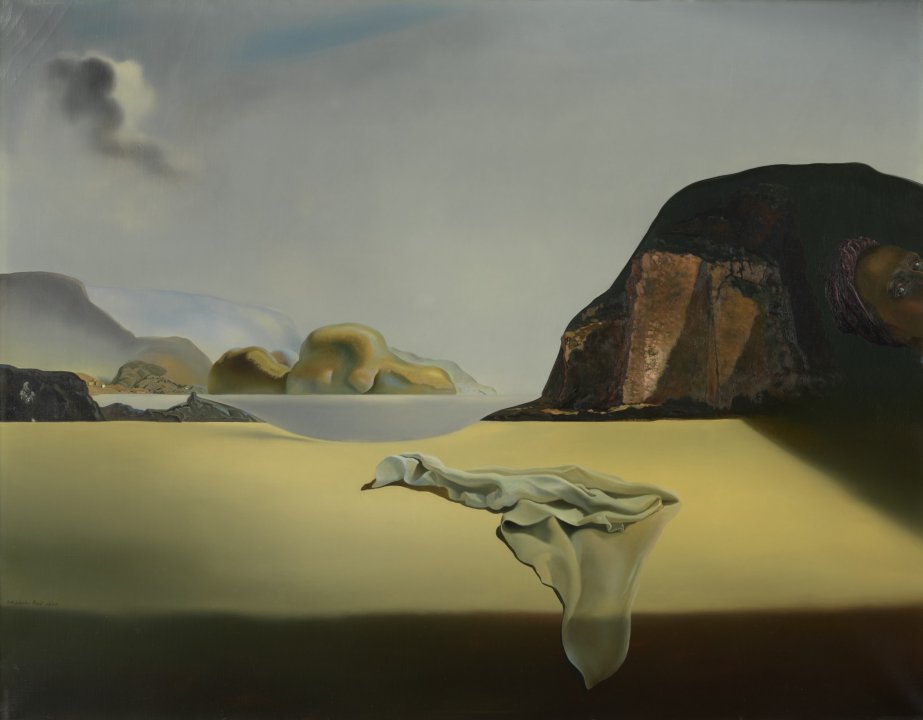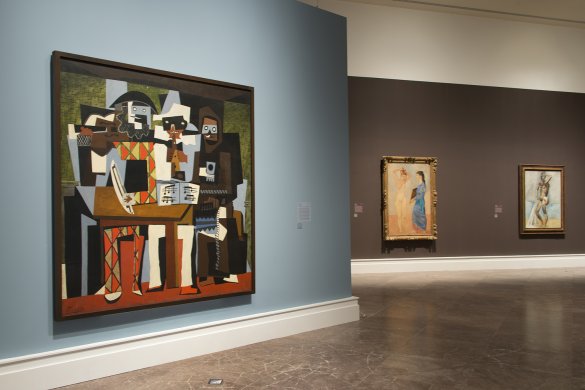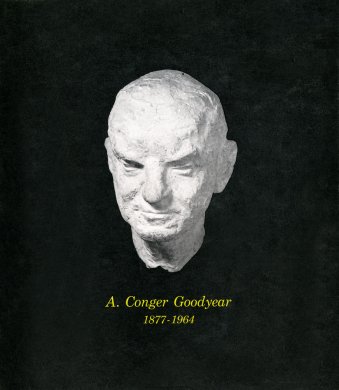Salvador Dalí
Spanish, 1904-1989
The Transparent Simulacrum of the Feigned Image, 1938
Artwork Details
Currently on View
Collection Highlight
Materials
oil on canvas
Measurements
support: 28 1/2 x 36 1/4 inches (72.39 x 92.075 cm); framed: 33 7/8 x 41 3/8 x 2 1/2 inches (86.04 x 105.09 x 6.35 cm)
Collection Buffalo AKG Art Museum
Credit
Bequest of A. Conger Goodyear, 1966
Accession ID
1966:9.3
In 1929, Salvador Dalí joined the artists of the Surrealist movement in Paris, sharing their belief in the importance of the subconscious and the freedom of the imagination. Subsequently, in the early 1930s, Dalí pioneered what he called the “paranoic-critical method” of painting—his inspired answer to making irrational images from the imagination and dreams look very real. He did not aim to illustrate specific dreams but, instead, sought to instill in his art their distorted sense of objects, time, and space. The title of this work is almost a warning against trying to rationally explain its imagery: “The Transparent (see-through) Simulacrum (a semblance of something) of the Feigned (not real) Image (a reproduction of something or a picture in the mind).”
Dalí often incorporated doubled or multiple images into his compositions, where one object can simultaneously appear to be something else entirely. The Transparent Simulacrum of the Feigned Image, for example, features a table on which rests a napkin and a bowl of food that can also be seen as a landscape in which the bowl becomes a bay and the contents appear to be distant mountains. The head floating on the right side of the work is that of Dalí’s wife, Gala, whom he often referred to as his inspirational muse. Many of his works, including this one, are signed with both of their names.

















